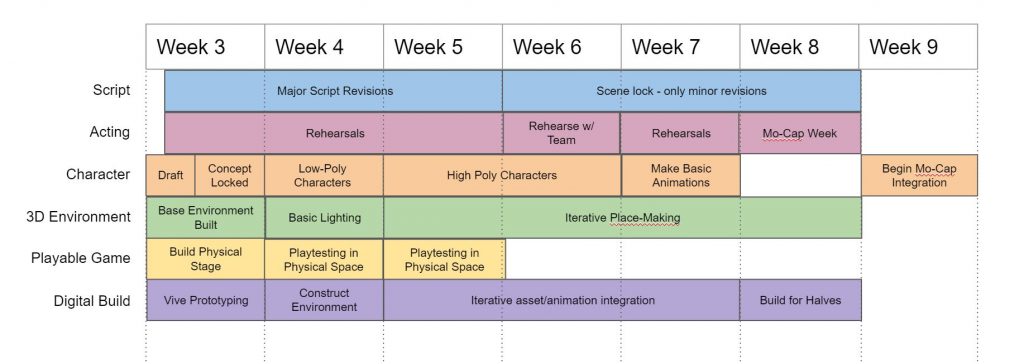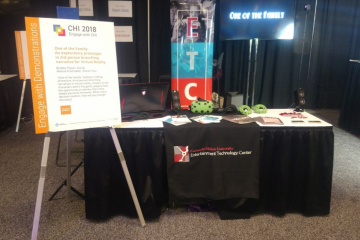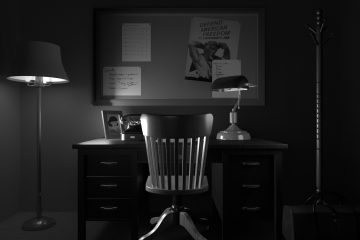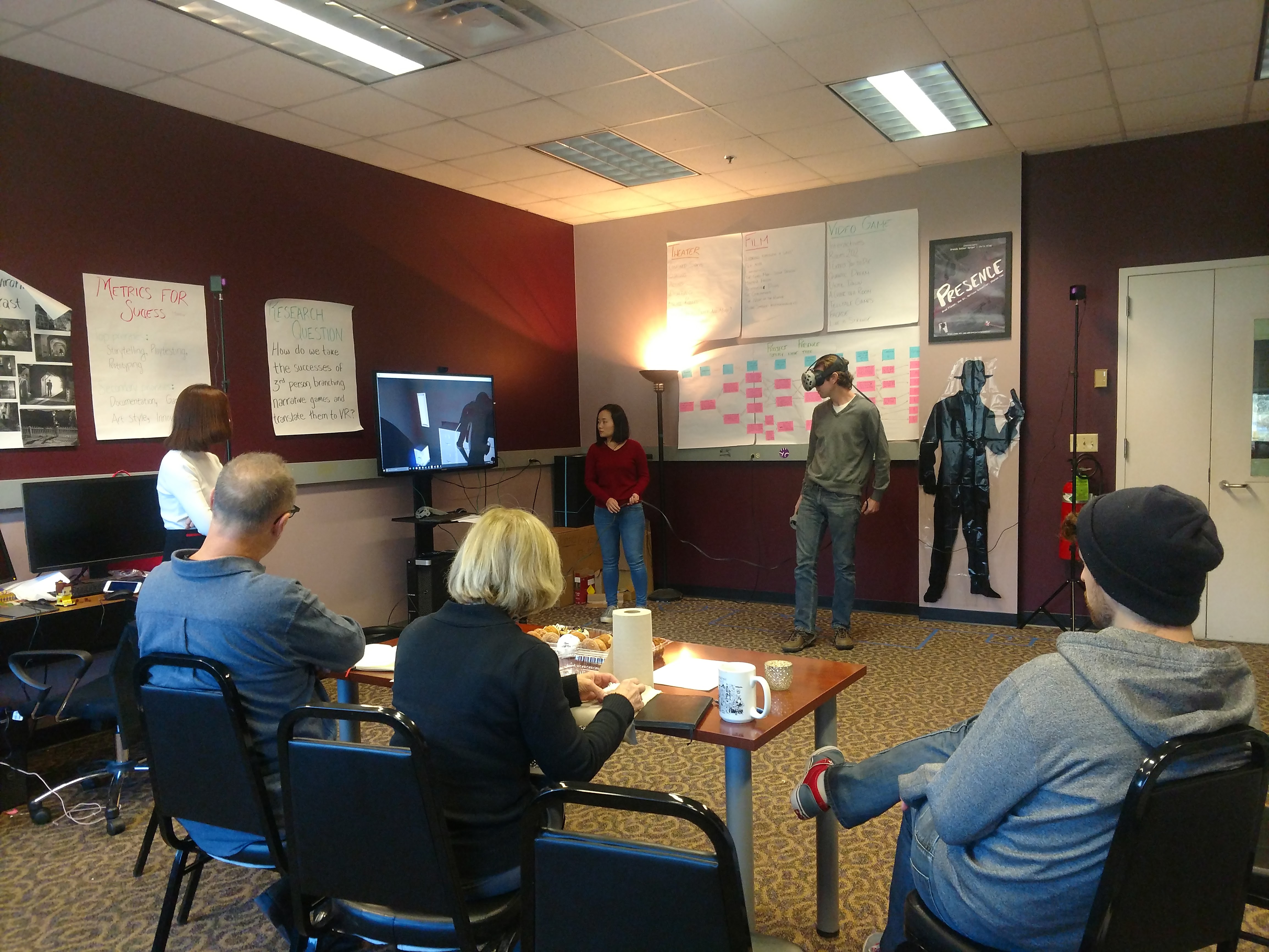Our team’s motto for this project is: “Playtest it!”
Want to know if the story is working? Playtest it. Can’t agree on a design direction? Playtest it.
We plan on conducting weekly playtests in order to ascertain that our project is the best it can possibly be. Currently that has left us with three goals for the week: 1) Paper playtest the script, 2) design the VR environment as fast as possible, 3) build a physical replica of the virtual environment.
Playtesting the Story
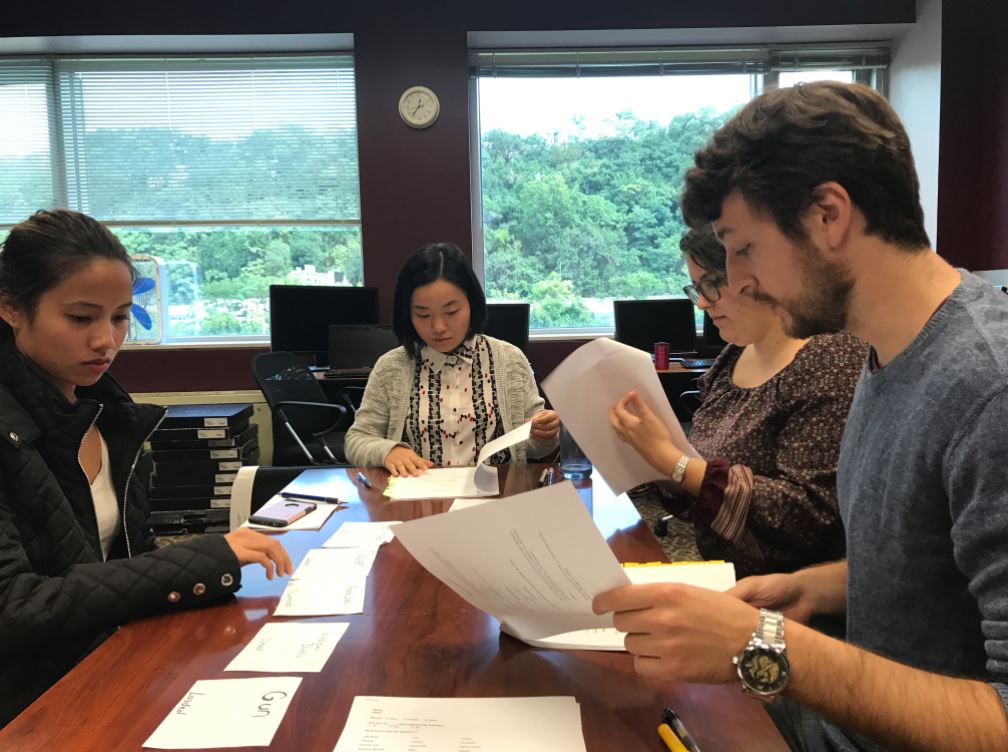
As soon as we had a script, we knew we needed to test it. The one problem was that the game is not nearly ready to test in the headset, and so we had to devise a paper version of the game.
In the game, the guest will theoretically have objects throughout the room that they can interact with, and in turn those interactions will impact what the characters do. In place of physical objects, we created double-sided cards for each object, and placed them in the order in which their state would “lock in” and impact the narrative. Brad and Melissa read character lines, and Zoe read stage directions. The guests flipped cards.
Although running through the story with 6 playtesters was not going to take us through every single node (for all we knew, they would all pick the exact same narrative path), getting feedback from the testers on how they made the decisions they did was just as important. Some of the guests noted that it took them until 2 or 3 objects were locked in before they realized how the system worked. Others talked about how each decision they made was for the purposes of creating a better story, rather than about helping a particular character. Ultimately our takeaways were:
- Choices need to be paced in order to give people time to understand the system, and therefore the stakes of each choice should be higher
- People were more attentive to choices where the characters talked significantly about the objects in question leading up to them being “locked in.” The other choices tended to lack importance to the players.
- It isn’t necessarily important that a person feel affiliation with the characters (since that may take more time than this experience has to build connection). Instead, it is important the character feel open to engage with and manipulate the story.
Building a Better Playtest
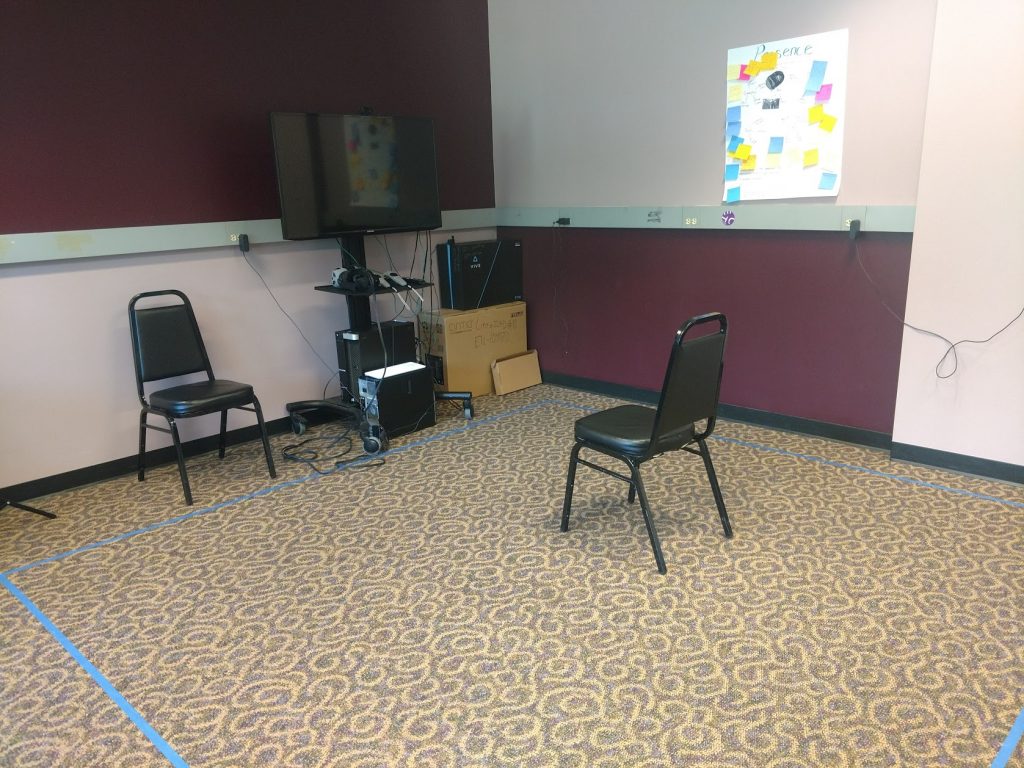
Almost immediately after completing the playtest, we learned that paper playtests for VR gaming can give false positives. This lit a fire under us to get to the point where we can put testers in the headset.
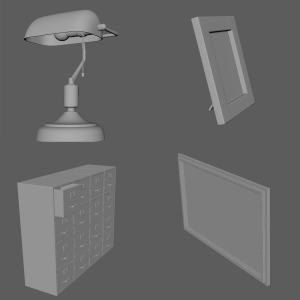 Zoe has been spending all week getting us technologically prepped for what is coming. In addition to setting up our 10ft x 10ft Vive space, she has also been building animation prototypes. Once Sharon has finished the initial environment objects, Zoe will begin to build a place-holder version of the game using basic animations. This will ultimately be the start of our iterative game design process, where each week (in response to playtesting) we will update the story, improve the animations, and refine the space.
Zoe has been spending all week getting us technologically prepped for what is coming. In addition to setting up our 10ft x 10ft Vive space, she has also been building animation prototypes. Once Sharon has finished the initial environment objects, Zoe will begin to build a place-holder version of the game using basic animations. This will ultimately be the start of our iterative game design process, where each week (in response to playtesting) we will update the story, improve the animations, and refine the space.
We are exploring ways to test the game before everything is up and running. One is through building a physical version of the environment with cardboard assets and real actors. The other is through adding additional Vive trackers to the computer and putting the two character actors in Vive headsets alongside the player. All are possible, and right now getting those up and running is a huge priority for us.
With that in mind, we spent the end of our week hashing out a development schedule in order to give us a sense of how on track we are to building our prototype by halves. This week has definitely given us a new sense of purpose and drive, and we’re excited for what the next set of playtests will be bring.
